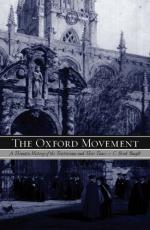|
This section contains 9,923 words (approx. 34 pages at 300 words per page) |

|
SOURCE: "The Oxford Movement," in John Henry Newman, Twayne Publishers, Inc., 1972, pp. 30-53.
In the essay that follows, Lapati chronicles Newman's involvement in the Oxford Movement from 1833 until his conversion to Catholicism in 1845.
When Newman returned to England in the summer of 1833, he found evidence justifying his fears for the future of the Anglican Church. The eminent Oxford professor, Thomas Arnold, had written: "The Church, as it now stands, no human power can save."1 The liberal Whig party was now in power; for generations the Established Church had allied itself with the conservative Tory power. The Anglican bishops, as members of the House of Lords, had offended the common people by voting against the Reform Bill of 1832, which sought the extension of the franchise; the Irish sees had already been suppressed by Parliament; and a group known as the Erastians were attempting to influence the Whigs with the...
|
This section contains 9,923 words (approx. 34 pages at 300 words per page) |

|


